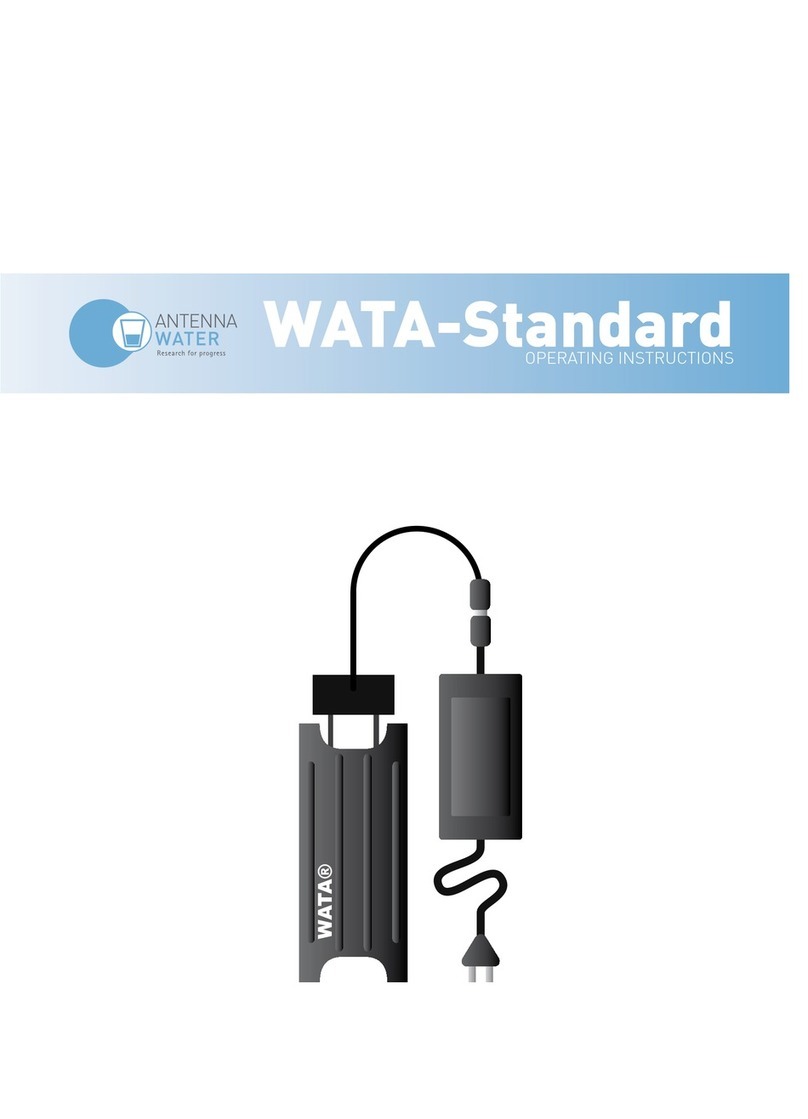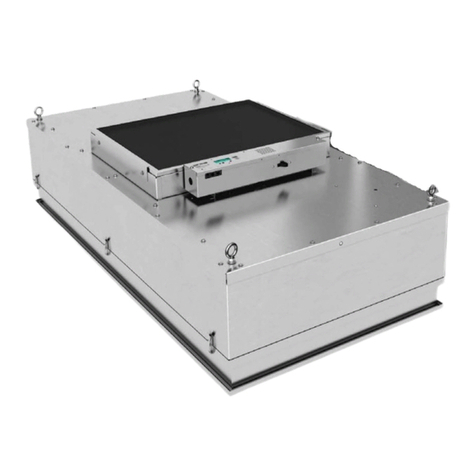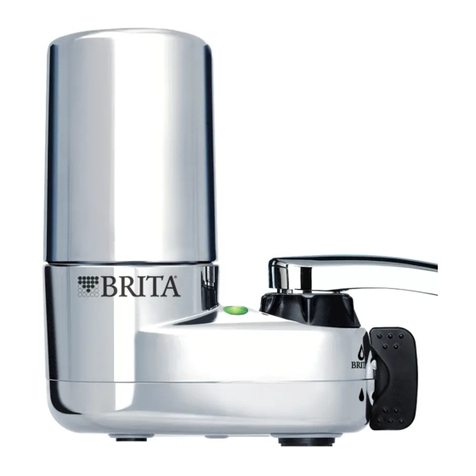GreenAire RAH-SAU series User manual

INSTALLATION AND OPERATION
FOR:
VS.7.14
INSTALLATION AND OPERATION
FOR:
RAH–SAU Series
1
INSTALLATION AND OPERATION

1. Equipment provided
: Locate all equipment provided with your order. The following
equipment may be provided –
make sure to look at your packing slips and purchase orders
to determine exactly what is included in your system.
a.
Generator Control Panel
b.
Reverse Osmosis system
c.
Governing humidity
d.
Installation and Maintenance Manual
2. Humidifier location:
Location of the humidifier
Installer. The following rules should be followed:
A.
Place the Control Panel in a place where the outlet fog will
surfaces. Make sure to verify the air patterns in the room to preclude any adverse
flows that would cause the fog to impinge upon any walls, the control cabinet or
other surfaces.
B.
If the unit is feeding a test chamber or room then
cabinet as close as possible to the dispersion point of the fog and no greater than
10’ ft. if possible. The longer the run of discharge tubing the more your losses of
fog will be. (Consult with the Factory if thi
INSTALLATION:
I) Control Panel
Location and Piping:
A. As stated above l
ocate
distance from
the dispersion point
B.
Make sure the Control Panel
C. When attaching
tubing to the inlet and outlet stubs on the Control Panel make
sure they are water tight.
D.
Sealant can be used on the
adhesive because these tubes will need to be loosened during maintenance.
CAUTION:
When piping try to avoid creating
piping. If you cannot avoid doing so then
trap locations. (see Fig. 1 )
: Locate all equipment provided with your order. The following
make sure to look at your packing slips and purchase orders
to determine exactly what is included in your system.
Generator Control Panel
Reverse Osmosis system
including 4 gal. storage tank
(if applicable)
Governing humidity
sensor
Installation and Maintenance Manual
Location of the humidifier
is the preference of the End User or
Installer. The following rules should be followed:
Place the Control Panel in a place where the outlet fog will
not impinge on any
surfaces. Make sure to verify the air patterns in the room to preclude any adverse
flows that would cause the fog to impinge upon any walls, the control cabinet or
If the unit is feeding a test chamber or room then
try and keep the control
cabinet as close as possible to the dispersion point of the fog and no greater than
10’ ft. if possible. The longer the run of discharge tubing the more your losses of
fog will be. (Consult with the Factory if thi
s is a problem
Location and Piping:
ocate
the Control Panel within 10
’ ft of equivalent piping
the dispersion point
.
Make sure the Control Panel
is installed LEVEL! VERY IMPORTANT!
tubing to the inlet and outlet stubs on the Control Panel make
sure they are water tight.
Sealant can be used on the
stubs if desired for complete seal.
adhesive because these tubes will need to be loosened during maintenance.
When piping try to avoid creating
water “traps” or low points in the
piping. If you cannot avoid doing so then
be sure to plumb a mini-
drain from such
2
: Locate all equipment provided with your order. The following
make sure to look at your packing slips and purchase orders
(if applicable)
is the preference of the End User or
not impinge on any
surfaces. Make sure to verify the air patterns in the room to preclude any adverse
flows that would cause the fog to impinge upon any walls, the control cabinet or
try and keep the control
cabinet as close as possible to the dispersion point of the fog and no greater than
10’ ft. if possible. The longer the run of discharge tubing the more your losses of
’ ft of equivalent piping
is installed LEVEL! VERY IMPORTANT!
tubing to the inlet and outlet stubs on the Control Panel make
But not
adhesive because these tubes will need to be loosened during maintenance.
water “traps” or low points in the
drain from such

E.
Pipe the drain line
Again be sure not to trap water. If necessary employ a condensate pump/drain to
elevate the drain water and evacuate it during drain cycles.
II) RO System Location and Piping:
A. Now install the R
everse
mountable with simply two screws and can be hung as self supporting. Follow
the instructions
outlined below
respective connections. All connections are simple quick connec
recommended that a shut off valve be placed in line after tapping the domestic
water line for the RO System supply.
1)
Locate and connect the
e
quipment. This will be the right side as you face the system. The
sup
ply side will consist of Black ¼” tubing.
2)
Locate the Yellow drain line, and place in an appropriate area for
drainage.
HUMIDIFICATION SEASON IS MONTHS AWAY.
CONDENSATE PUMP
3)
Locate the b
humidifiers
system metal frame)
storage tank.
proximity to the RO System.
4)
Make sure to open the valve at the top of the storage tank.
5)
Once installed, allow the system to run for approximately 15
minutes to flush completely. Make sure there are no leaks, parts
can come loose in shippin
6)
The RO System will run until all the humidifier supply lines and
storage tank are filled and charged to the pressure of the building.
This may take several hours to happen.
7)
PLEASE N
WATER SUPPLY TO THE RO SYSTEM.
if this is a problem)
B.
Pipe supply piping from
Panel/Generator
or STS Box
C.
Open the inline water valve off of the build
the
filling of water to the
filling the clear water filter housings on the RO System.
D. Check for leaks.
As stated above The RO System will run until all the humidifier
supply
lines and storage tank are filled and charged to the pressure of the
building. This may take several hours to happen. Again, make sure that the
drain is working –
if the drain line is fed to a condensate pump the pump MUST
BE OPERABLE!
The RO System h
Pipe the drain line
from the Control Panel
to an appropriate drain location.
Again be sure not to trap water. If necessary employ a condensate pump/drain to
elevate the drain water and evacuate it during drain cycles.
II) RO System Location and Piping:
everse
Osmosis (RO)
Water system. These systems are wall
mountable with simply two screws and can be hung as self supporting. Follow
outlined below
for connecting the colored tubes to their
respective connections. All connections are simple quick connec
recommended that a shut off valve be placed in line after tapping the domestic
water line for the RO System supply.
Locate and connect the
domestic water
supply side of the
quipment. This will be the right side as you face the system. The
ply side will consist of Black ¼” tubing.
Locate the Yellow drain line, and place in an appropriate area for
drainage.
NOTE: DRAIN MUST BE OPERABLE! EVEN IF THE
HUMIDIFICATION SEASON IS MONTHS AWAY.
CONDENSATE PUMP
– IT MUST BE ON LINE!
Locate the b
lu
e product water line that will provide
humidifiers
. Utilize a “t” connector
(provided and taped to the RO
system metal frame)
to hook up the product water (blue line) to the
storage tank.
Locate the 2.5 gallon storage/bladder
proximity to the RO System.
Make sure to open the valve at the top of the storage tank.
Once installed, allow the system to run for approximately 15
minutes to flush completely. Make sure there are no leaks, parts
can come loose in shippin
g. Hand tightening may be necessary.
The RO System will run until all the humidifier supply lines and
storage tank are filled and charged to the pressure of the building.
This may take several hours to happen.
PLEASE N
OTE: 35 PSI MINIMUM REQUIRED ON INCO
WATER SUPPLY TO THE RO SYSTEM.
(Consult with the Factory
if this is a problem)
Pipe supply piping from
the RO System to the fitting on the side of the
or STS Box
labeled “water in”.
Open the inline water valve off of the build
ing domestic water supply to begin
filling of water to the
RO
System. You should notice water immediately
filling the clear water filter housings on the RO System.
As stated above The RO System will run until all the humidifier
lines and storage tank are filled and charged to the pressure of the
building. This may take several hours to happen. Again, make sure that the
if the drain line is fed to a condensate pump the pump MUST
The RO System h
as an automatic shut off valve (ASO) that
3
to an appropriate drain location.
Again be sure not to trap water. If necessary employ a condensate pump/drain to
Water system. These systems are wall
mountable with simply two screws and can be hung as self supporting. Follow
for connecting the colored tubes to their
respective connections. All connections are simple quick connec
ts. It is
recommended that a shut off valve be placed in line after tapping the domestic
supply side of the
quipment. This will be the right side as you face the system. The
Locate the Yellow drain line, and place in an appropriate area for
NOTE: DRAIN MUST BE OPERABLE! EVEN IF THE
IF PIPED TO A
e product water line that will provide
RO water to the
(provided and taped to the RO
to hook up the product water (blue line) to the
Locate the 2.5 gallon storage/bladder
tank in close
Make sure to open the valve at the top of the storage tank.
Once installed, allow the system to run for approximately 15
minutes to flush completely. Make sure there are no leaks, parts
g. Hand tightening may be necessary.
The RO System will run until all the humidifier supply lines and
storage tank are filled and charged to the pressure of the building.
OTE: 35 PSI MINIMUM REQUIRED ON INCO
MING
(Consult with the Factory
the RO System to the fitting on the side of the
Control
ing domestic water supply to begin
System. You should notice water immediately
As stated above The RO System will run until all the humidifier
lines and storage tank are filled and charged to the pressure of the
building. This may take several hours to happen. Again, make sure that the
if the drain line is fed to a condensate pump the pump MUST
as an automatic shut off valve (ASO) that

is completely mechanical and will only open and pass water to drain when the
pressures are not equalized between the domestic water supply and the
humidifier supply lines. If there are any questions or issues plea
Factory Representative.
III) Accessories:
A.
If the system was provided with a controlling humidity sensor then install it
and wire it from the Generator panel at the appropriately labeled locations on
the terminals. Refer to the Wiring
landing locations and line sizes.
not required.
B.
Do the same as the above with both the High Limit humidistat and the Air
Flow switch if provided. Terminal locations are
Diagram provided with your Unit.
dampers.
C. If a BA
S signal is being provided then connect it to the proper terminal
locations in the Generator as labeled in the Wiring Diagram provided with the
Unit.
In this case a separate 24VAC signal is required to turn on the
humidifier.
is completely mechanical and will only open and pass water to drain when the
pressures are not equalized between the domestic water supply and the
humidifier supply lines. If there are any questions or issues plea
Factory Representative.
If the system was provided with a controlling humidity sensor then install it
and wire it from the Generator panel at the appropriately labeled locations on
the terminals. Refer to the Wiring
Diagram
provided with your unit for proper
landing locations and line sizes.
Shiel
ded control wire is recommended but
Do the same as the above with both the High Limit humidistat and the Air
Flow switch if provided. Terminal locations are
again labeled in the Wiring
Diagram provided with your Unit.
CAUTION:
locate AFS before any
S signal is being provided then connect it to the proper terminal
locations in the Generator as labeled in the Wiring Diagram provided with the
In this case a separate 24VAC signal is required to turn on the
4
is completely mechanical and will only open and pass water to drain when the
pressures are not equalized between the domestic water supply and the
humidifier supply lines. If there are any questions or issues plea
se contact your
If the system was provided with a controlling humidity sensor then install it
and wire it from the Generator panel at the appropriately labeled locations on
provided with your unit for proper
ded control wire is recommended but
Do the same as the above with both the High Limit humidistat and the Air
again labeled in the Wiring
locate AFS before any
zone
S signal is being provided then connect it to the proper terminal
locations in the Generator as labeled in the Wiring Diagram provided with the
In this case a separate 24VAC signal is required to turn on the

IV)
Start Up Procedure:
A.
Verify Piping connections
1.
double check the inlet and outlet water connections to the system
either at the generator panel or at the S
be tight.
2.
open up any shut off valves up stream to the water inlet and make sure
that, with the water charged, there are no leaks while the System is off.
3.
now check the fogging inlet and outlet connections from the UPC t
(these are typically 3” or 2” connections). Make sure that the hose
couplings are tightened.
4.
evaluate the installing contractor’s piping from the fogging outlet
connection to the DTA and make sure it isn’t excessively long (in
excess of 10’) and
where condensate can accumulate without a drain. (please note
typical steam piping practices should be utilized when piping a fogging
supply line; i.e. don’t create traps and do use the manufacturers
reco
mmended pipe size)
5.
if a vertical header DTA was used make sure the drain connection at
the bottom of the header has been connected to a drain.
B.
Turning the System On:
1.
go to the control panel and make sure the panel on/off switch is off.
2.
open up the
–
if CB is showing green then the CB is in the ‘off’ position. If it is
showing ‘red’ it is in the ‘on’ position and power will pass through the
CB.
3.
now remove the fuse on the 48VAC transformer a
place it nearby.
4.
verify that the 120V line to the panel is connected and live.
5.
verify that the Air Flow switch is installed and wired appropriately to the
proper terminals in the control panel (see wiring diagram that came
with the pan
6.
verify that the Hi
the proper terminals in the control panel (see wiring diagram that came
with the panel and/or was submitted for that job)
7.
verify that the controll
been installed and has been wired back to the proper terminals in the
control panel (see wiring diagram that came with the panel and/or was
submitted for that job)
8.
verify that the AC System to which the humidifi
and running. Make sure it is running at the expected speed and
volume as scheduled in the Submittals and on the Humidifier
Schedule. If the volume (CFM) is more than 20% different than what
was planned for during the design and s
Start Up Procedure:
Verify Piping connections
:
double check the inlet and outlet water connections to the system
either at the generator panel or at the S
TS box. Connections should
open up any shut off valves up stream to the water inlet and make sure
that, with the water charged, there are no leaks while the System is off.
now check the fogging inlet and outlet connections from the UPC t
(these are typically 3” or 2” connections). Make sure that the hose
couplings are tightened.
evaluate the installing contractor’s piping from the fogging outlet
connection to the DTA and make sure it isn’t excessively long (in
excess of 10’) and
that no ‘traps’ have been created in the piping
where condensate can accumulate without a drain. (please note
typical steam piping practices should be utilized when piping a fogging
supply line; i.e. don’t create traps and do use the manufacturers
mmended pipe size)
if a vertical header DTA was used make sure the drain connection at
the bottom of the header has been connected to a drain.
Turning the System On:
go to the control panel and make sure the panel on/off switch is off.
open up the
control panel and make sure the circuit breaker (CB) is off
if CB is showing green then the CB is in the ‘off’ position. If it is
showing ‘red’ it is in the ‘on’ position and power will pass through the
now remove the fuse on the 48VAC transformer a
nd hold on to it or
place it nearby.
verify that the 120V line to the panel is connected and live.
verify that the Air Flow switch is installed and wired appropriately to the
proper terminals in the control panel (see wiring diagram that came
with the pan
el and/or was submitted for that job)
verify that the Hi
-
Limit switch is installed and has been wired back to
the proper terminals in the control panel (see wiring diagram that came
with the panel and/or was submitted for that job)
verify that the controll
ing humidity sensor (if supplied by GAS) has
been installed and has been wired back to the proper terminals in the
control panel (see wiring diagram that came with the panel and/or was
submitted for that job)
verify that the AC System to which the humidifi
er is connected to is on
and running. Make sure it is running at the expected speed and
volume as scheduled in the Submittals and on the Humidifier
Schedule. If the volume (CFM) is more than 20% different than what
was planned for during the design and s
izing of the humidifier please
5
double check the inlet and outlet water connections to the system
–
TS box. Connections should
open up any shut off valves up stream to the water inlet and make sure
that, with the water charged, there are no leaks while the System is off.
now check the fogging inlet and outlet connections from the UPC t
ank
(these are typically 3” or 2” connections). Make sure that the hose
evaluate the installing contractor’s piping from the fogging outlet
connection to the DTA and make sure it isn’t excessively long (in
that no ‘traps’ have been created in the piping
where condensate can accumulate without a drain. (please note
–
typical steam piping practices should be utilized when piping a fogging
supply line; i.e. don’t create traps and do use the manufacturers
if a vertical header DTA was used make sure the drain connection at
the bottom of the header has been connected to a drain.
go to the control panel and make sure the panel on/off switch is off.
control panel and make sure the circuit breaker (CB) is off
if CB is showing green then the CB is in the ‘off’ position. If it is
showing ‘red’ it is in the ‘on’ position and power will pass through the
nd hold on to it or
verify that the 120V line to the panel is connected and live.
verify that the Air Flow switch is installed and wired appropriately to the
proper terminals in the control panel (see wiring diagram that came
Limit switch is installed and has been wired back to
the proper terminals in the control panel (see wiring diagram that came
ing humidity sensor (if supplied by GAS) has
been installed and has been wired back to the proper terminals in the
control panel (see wiring diagram that came with the panel and/or was
er is connected to is on
and running. Make sure it is running at the expected speed and
volume as scheduled in the Submittals and on the Humidifier
Schedule. If the volume (CFM) is more than 20% different than what
izing of the humidifier please
Table of contents
Other GreenAire Water Filtration System manuals
Popular Water Filtration System manuals by other brands
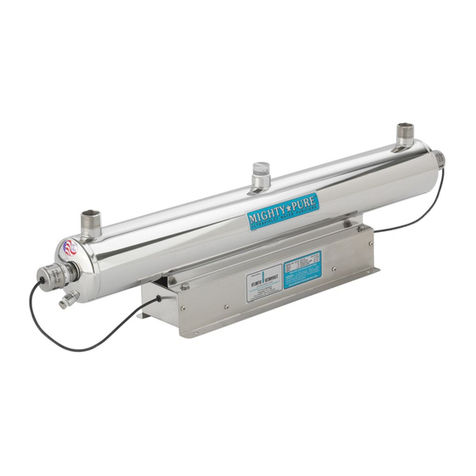
Atlantic Ultraviolet
Atlantic Ultraviolet Mighty Pure MP16A owner's manual
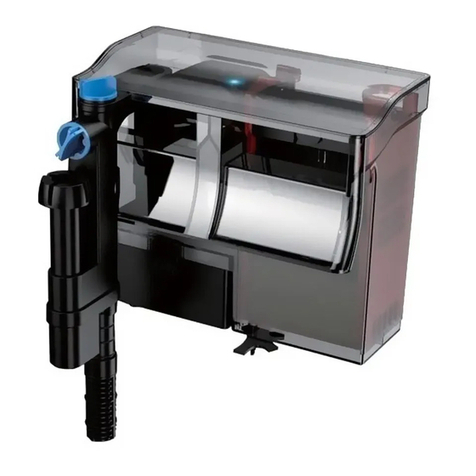
SunSun
SunSun CBG-500 Operation manual
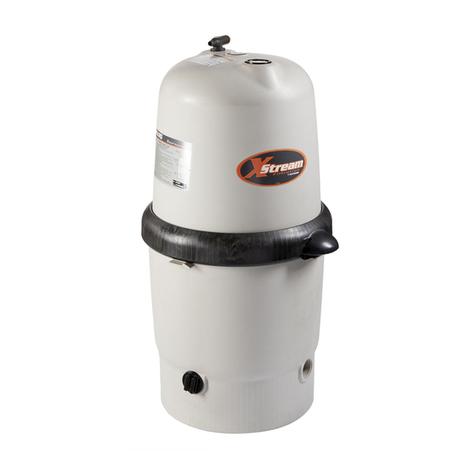
Hayward
Hayward XStream Filtration Series owner's manual
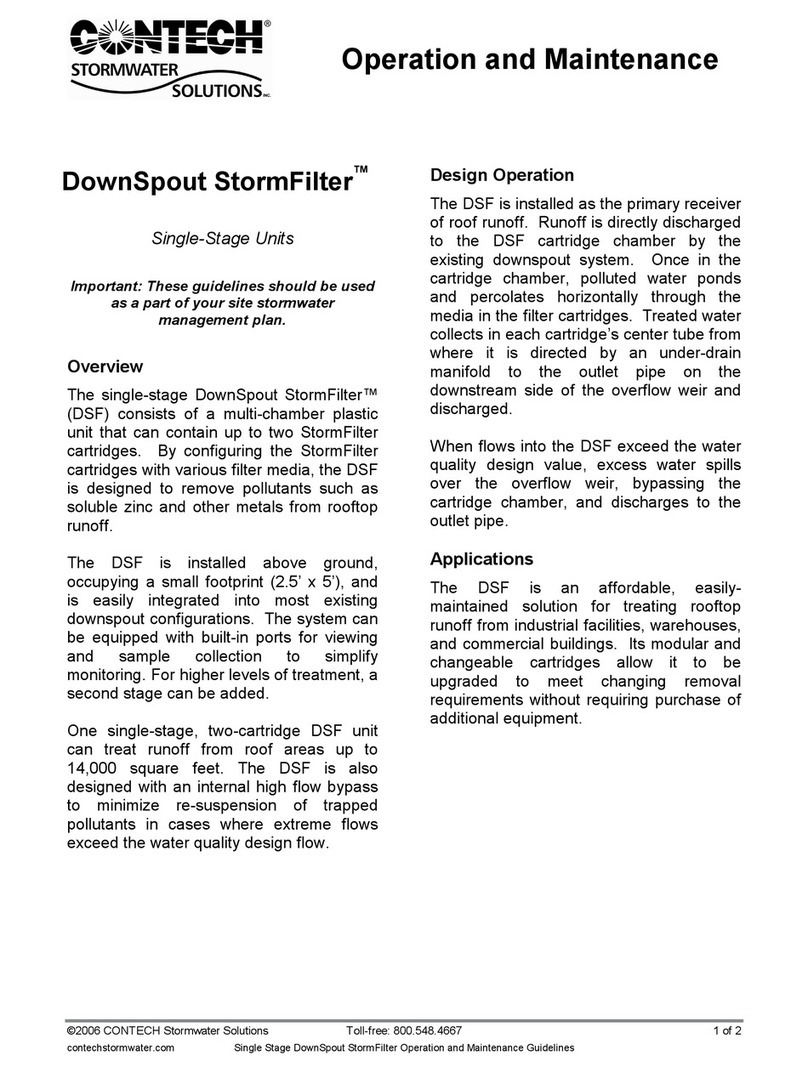
Contech
Contech DownSpout StormFilter Operation and maintenance

Teka
Teka Airfilter MINI operating instructions
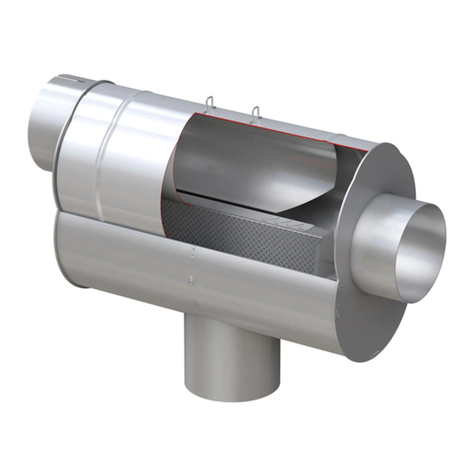
Wisy
Wisy LineAir 100 Installation and operating instructions
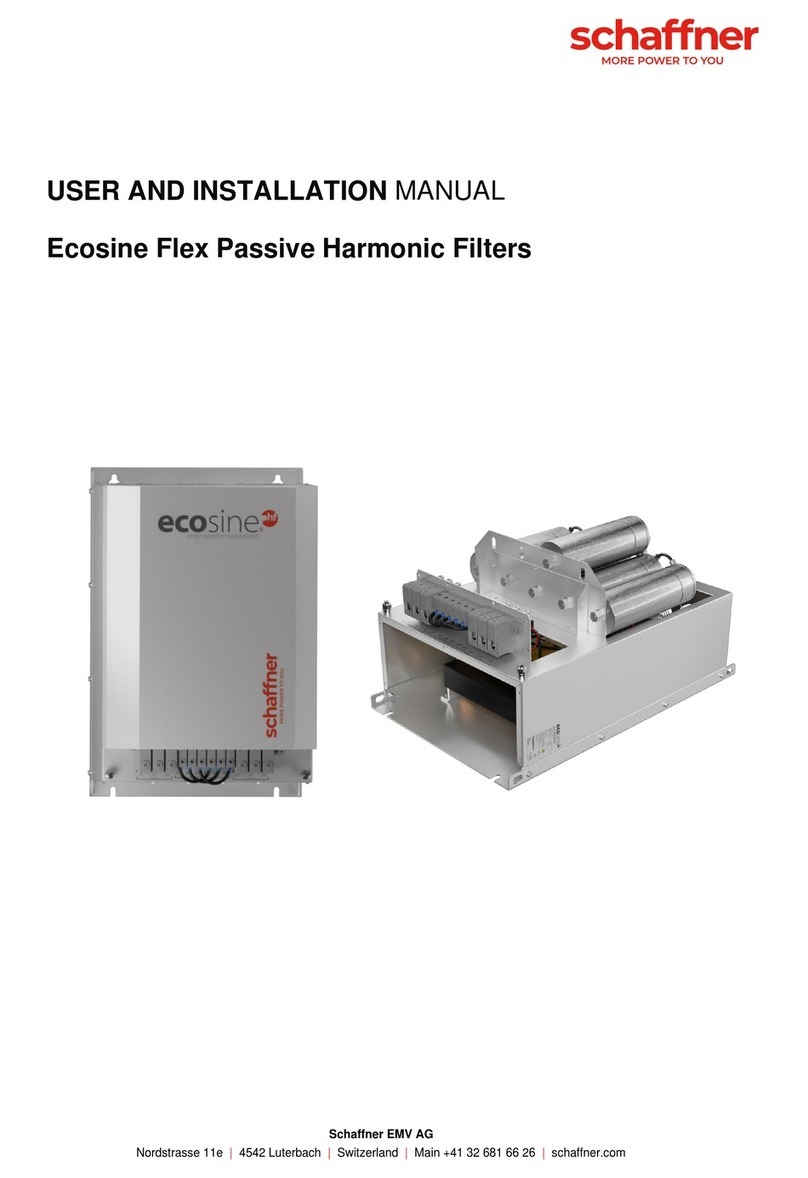
Schaffner
Schaffner Ecosine FN3446 Series User and installation manual
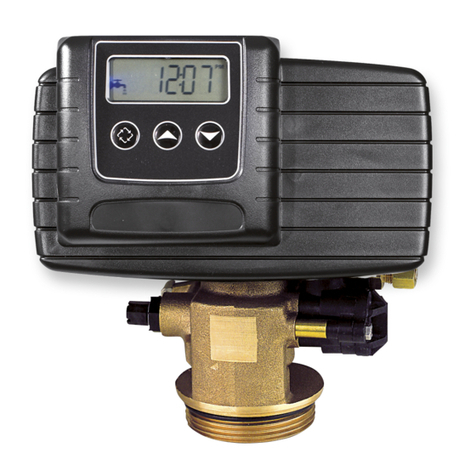
Pentair
Pentair FLECK 4600 SXT Installer manual

H2O International
H2O International H20-500 product manual

Renkforce
Renkforce 2306241 operating instructions
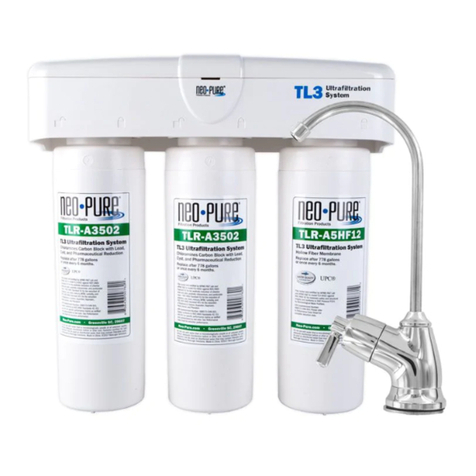
Neo-Pure
Neo-Pure TL3-A502 manual
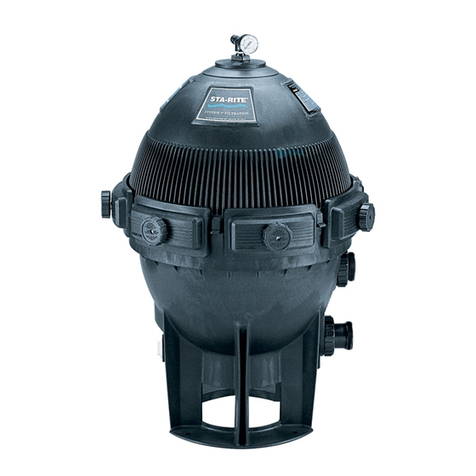
STA-RITE
STA-RITE VERTICAL GRID DE FILTERS S7D75 owner's manual



